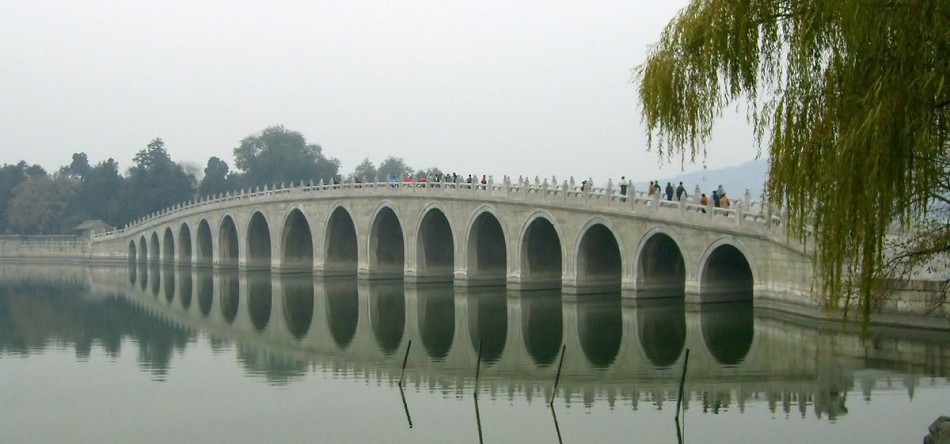The Seventeen-Arch Bridge, originally called the Garden of Clear Ripples, in China’s Beijing Summer Palace has delighted sightseers and photographers over the years. During twilight, around the winter solstice, all 17 of its arches are beautifully illuminated by the soft rays of the sun as it hits the horizon, being perpendicular to the bridge.
You can see the long bridge as you enter the Summer Palace. It’s said that the eastern Kunming shoreline, the bridge, and Nanhu Island together signify a turtle — with the island as its head, the bridge as its neck, and the coastline as the turtle’s shell — which represents longevity.

The seventeen-arch bridge dates back to 1750
The architecture dates back to 1750, to the time of Emperor Qianlong of the Qing Dynasty (1644-1911), and was re-built during Guangxu’s period. The bridge, which extends over the lake, is 150 meters long. There are 544 distinctive lions that have been carved into its white marble parapets. It’s similar in style to the Marco Polo (Lugou) Bridge in Beijing or the Precious Belt (Baodai) Bridge in Suzhou.
The architects who designed the bridge used geo astronomy to calculate the timing of the sun’s movements. They’d discovered that the sun reached its lowest point in the afternoons around the winter solstice and designed the bridge to stand perpendicular to the sun’s twilight rays. The sunlight shining through its 17 arches displays a beautiful scene.

The Imperial Summer Palace contains several lakes and Qing Dynasty gardens. It is situated in the Haidian District, northwest of Beijing. The Summer Palace was added to UNESCO’s World Heritage List in 1998, and was declared “a masterpiece of Chinese landscape garden design.”
Translated by Chua BC and edited by Emiko Kingwell







